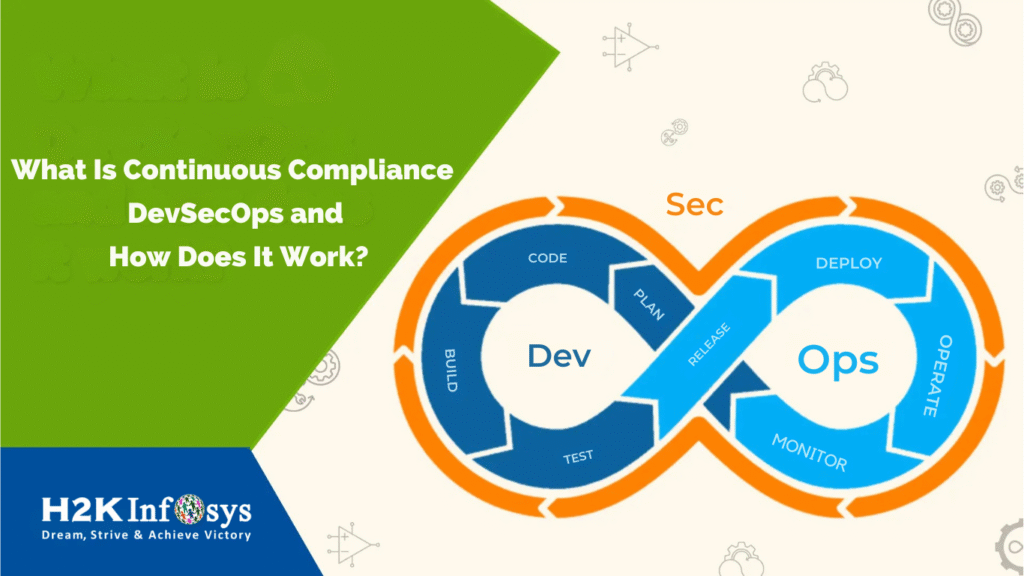In the dynamic world of software development, delivering high-quality products is paramount. One key aspect that significantly contributes to software quality is effective testing, ensuring applications meet their requirements and function flawlessly. Among various software testing techniques, Equivalence Class Partitioning stands out due to its simplicity, efficiency, and effectiveness. This article explores Equivalence Class Partitioning in-depth, highlighting its importance, methodology, real-world applications, and its essential role in Quality Assurance Testing Courses and Software Testing and Quality Assurance Courses.
Understanding Equivalence Class Partitioning
Equivalence Class Partitioning (ECP) is a Software testing technique that divides input data of a software unit into partitions of equivalent data from which test cases can be derived. The fundamental principle behind ECP is that if one condition in a partition passes or fails, all others within that partition will yield similar results. This approach significantly reduces the number of test cases, improving efficiency without compromising test coverage.
Why Equivalence Class Partitioning Matters
When software testers deal with an extensive range of inputs, testing every possible scenario becomes impractical and resource-intensive. Equivalence Class Partitioning addresses this challenge by:
- Reducing redundancy and repetition in testing efforts.
- Maximizing coverage with fewer test cases.
- Enhancing efficiency and effectiveness of the testing process.
- Identifying critical areas of potential defects quickly.
Incorporating Equivalence Class Partitioning into Quality Assurance Testing Courses ensures future professionals understand how to optimize testing processes, a critical skill for their careers.
Methodology of Equivalence Class Partitioning
Effective implementation of Equivalence Class Partitioning involves a structured approach:
Step 1: Identify Input Conditions
Clearly define all possible input conditions. These conditions could range from numerical inputs, data ranges, specific values, or logical conditions.
Step 2: Partition Input Data
Divide inputs into distinct equivalence classes. Each class represents a set of data that the software is expected to handle in the same way.
Step 3: Design Test Cases
Select representative values from each equivalence class to create test cases. Typically, one test case per class is sufficient to determine the software’s behavior.
Types of Equivalence Classes
Equivalence classes generally fall into two broad categories:
1. Valid Equivalence Classes
These are input ranges or conditions that the software should handle successfully. For example, if a software accepts an age input between 18 to 60, a valid equivalence class could be:
- 18 to 60 (inclusive).
2. Invalid Equivalence Classes
These encompass inputs that should cause the software to reject or handle with an error message. Continuing the above example, invalid equivalence classes would be:
- Less than 18.
- Greater than 60.
- Non-numeric values.
Quality assurance testing courses extensively use practical examples like these to demonstrate the value of ECP clearly and effectively.
Real-World Applications of Equivalence Class Partitioning
The practical value of Equivalence Class Partitioning is clearly visible in real-world scenarios. Let’s explore a few examples:
Example 1: User Registration Form
Consider a user registration form where the user must input their age. If the system allows ages 18 to 60, equivalence classes might be:
- Valid Class: Ages 18-60
- Invalid Classes: Below 18, above 60, non-numeric characters
Test cases derived from these partitions:
- Age 25 (valid)
- Age 15 (invalid)
- Age 65 (invalid)
- Input “twenty-five” (invalid)
This efficiently ensures coverage of possible user inputs without excessive test cases.
Example 2: Banking Application
In banking software, account transactions typically have limits. For instance, a transaction amount might be limited between $10 and $10,000:
- Valid Class: $10 to $10,000
- Invalid Classes: Less than $10, more than $10,000, non-numeric input
By creating specific test cases from each partition, testers effectively ensure robust software performance.
Advantages of Equivalence Class Partitioning
Adopting Equivalence Class Partitioning has numerous benefits:
- Efficient Testing: Reduces the number of required tests, saving time and resources.
- Comprehensive Coverage: Ensures diverse input scenarios are tested.
- Early Defect Detection: Identifies problematic inputs early in the development cycle.
- Simplicity: Easy to understand and implement, especially beneficial for beginners undergoing Software Testing and Quality Assurance Courses.
Limitations and Challenges
While powerful, Equivalence Class Partitioning has its limitations:
- Complex Inputs: It may not cover scenarios where inputs are highly complex or interdependent.
- Boundary Issues: It typically requires combination with boundary value analysis for comprehensive coverage.
- Subjectivity: Selecting representative data for partitions may sometimes involve subjective judgment.
Understanding these limitations helps testers use ECP more effectively, often complementing it with other techniques taught in quality assurance testing courses.
Combining Equivalence Class Partitioning with Other Testing Techniques
Equivalence Class Partitioning becomes even more effective when combined with other testing methodologies:
- Boundary Value Analysis (BVA): Often used alongside ECP, BVA focuses specifically on boundary conditions, addressing ECP’s weakness in detecting boundary-related defects.
- Decision Table Testing: Useful when dealing with complex business rules, enhancing the comprehensiveness of test scenarios.
Quality Assurance Testing Courses often teach these combinations to ensure students develop versatile testing skills.
Integrating Equivalence Class Partitioning in Software Testing Courses
Software Testing and Quality Assurance Courses should systematically integrate Equivalence Class Partitioning into their curriculum by:
- Practical Workshops: Providing hands-on exercises that illustrate partitioning techniques.
- Real-life Case Studies: Demonstrating how ECP identifies real-world software defects.
- Tool Demonstrations: Showing how automation tools facilitate partitioning and testing.
Such an integrated approach equips learners with practical, real-world skills essential for professional success.
Conclusion
Equivalence Class Partitioning stands as an indispensable component of effective software testing strategies. By ensuring maximum test coverage with minimum redundancy, it significantly contributes to higher software quality and efficiency. Whether you are a seasoned tester or a newcomer enrolled in Software Testing and Quality Assurance Courses, mastering Equivalence Class Partitioning is critical to advancing your career and delivering impeccable software products.
Key Takeaways
- Equivalence Class Partitioning simplifies testing by dividing input data into equivalently behaving partitions.
- It improves efficiency and test coverage while reducing redundancy.
- Ideal for Quality Assurance Testing Courses and Software Testing and Quality Assurance Courses due to its practical applicability and simplicity.
- Works best when combined with techniques like Boundary Value Analysis for comprehensive testing.
Mastering Equivalence Class Partitioning empowers testers to enhance software reliability, driving higher user satisfaction and overall business success.
























52 Responses
1. Equivalence class partition is a type of software testing design technique which divides the input test data of the application into partitions with similar elements.
2. The limitation entails the fact that you are not testing all the values in the class partition, which may or may not affect test results. In other words, you are not testing all the possible values, as you would in blanket test coverage. Exhaustive testing cannot be achieved as such.
Equivalence class partition is a type of software testing design technique which divides the input test data of the application into partitions, from which test cases can be derived. The assumption is testing one data value from each partition is equivalent to testing the entire partition. An advantage of this approach is reduction in the time required for testing software due to lesser number of test cases.
1. What are the limitations of Equivalence testing?
This technique is used to reduce an infinite number of test cases to a finite number, while ensuring that the selected test cases, which will cover all possible scenarios.
Example to understand the Equivalence Partitioning:
If one application is accepting input range from 1 to 100, using equivalence class we can divide inputs into the classes, for example, one for valid input and another for invalid input and design one test case from each class.
In this example test cases:
input range between 1 to 100.
invalid data any one value below 1.
invalid any value above 100.
The hypothesis behind that is, if one condition of partition pass all others value will pass. Likewise, if one condition fails, all others will fail.
What is equivalence testing?
Equivalence partitioning or equivalence class partitioning (ECP) is a software testing technique that divides the input data of a software unit into partitions of equivalent data from which test cases can be derived. In principle, test cases are designed to cover each partition at least once.The assumption is testing one data value from each partition is equivalent to testing the entire partition.
The hypothesis behind that is, if one condition of partition pass all others value will pass. Likewise, if one condition fails, all others will fail.
What are the limitations of Equivalence testing?
In cases where the data ranges or sets involved approach simplicity (Example: 0-10, 11-20, 21-30), and testing all values would be practical, blanket test coverage using all values within and bordering the ranges should be considered. Blanket test coverage can reveal bugs that would not be caught using the equivalence partitioning method, if the software includes sub-partitions which are unknown to the tester.[2] Also, in simplistic cases, the benefit of reducing the number of test values by using equivalence partitioning is diminished, in comparison to cases involving larger ranges (Example: 0-1000, 1001-2000, 2001-3000).
1. What is equivalence testing?
Equivalence class partition is a type of software testing design technique which divides the input test data of the application into partitions with similar elements.
Equivalence class partition is a type of software testing design technique which divides the input test data of the application into partitions with similar elements. The assumption is testing one data value from each partition is equivalent to testing the entire partition.
For example assume that the application accepts a character from A-Z. Valid partitioning is the characters from A-Z is inclusive and invalid partitioning can be a-z, symbols, integers etc. The fundamental concept of this testing comes from equivalence class which intern comes from equivalence relation.
Equivalence class partition is a type of software testing design technique which divides the input test data of the application into partitions with similar elements. The assumption is testing one data value from each partition is equivalent to testing the entire partition. At least one equivalent data from each partition, the test case can be derived.
In this technique, we will divide a series of test condition into partition which can be considered as the same.There are number of test conditions we use equivalence partition test, divide all the test cases and from that we choose any one value from each partition in testing, if one condition of partition pass all others value will pass. Likewise, if one condition fails, all others will fail.
Equivalence class partition is a type of software testing design technique which divides the input test data of the application into partitions with similar elements .The limitations of Equivalence testing is that one condition of the partition may pass but this could also cause the other values to fail. This would be a disadvantage for the tester because when one condition fails, all others will fail as well.
Equivalence class partition is a type of software testing design technique which divides the input test data of the application into partitions with similar elements. The assumption is testing one data value from each partition is equivalent to testing the entire partition. At least one equivalent data from each partition, the test case can be derived. The hypothesis behind that is, if one condition of partition pass all others value will pass. Likewise, if one condition fails, all others will fail.
Equivalence class partition is a type of software design technique, which divides the input test data of the applications into partitions with similar elements.
Limitation:
The assumption is testing one data value from each partition is equivalent to testing the entire partition. At least one data value from each partition the test case can be derived.
Equivalence class partition is a type of software testing design technique which divides the input test data of the application into partitions with similar elements. The assumption is testing one data value from each partition is equivalent to testing the entire partition. At least one equivalent data from each partition, the test case can be derived. Consider,
a customer name input field accepts 2 to 24 chars.
Valid partition: a-z, A-Z, 2 to 24 chars
Invalid partition: numeric, special char, less than 2 chars, more than 24 chars
Generally equivalence class partition testing is a black box testing design technique which can be applied to all levels of testing. In this technique, we will divide a series of test condition into partition which can be considered as the same. It divides the input data into different equivalence data class.
The limitation is, if one condition fails, all others will fail.
Equivalence Testing
Equivalence testing is a types of software testing design techniques which divide the input data test data of the application into the partition of similar elements. The assumption is testing one data value from each partition is equivalent to testing the entire partition.
Generally equivalence class partition testing is a black box testing design technique which can be applied to all levels of testing.
equivalence class partition testing is a black box testing design
technique which can be applied to all levels of testing. In this technique, we will divide a series of test condition into partition which can be considered as the same. It divides the input data into different equivalence data class. We can use this type of technique, where there is different data accepted in the input field.
Limitation – The limitation of equivalence testing technique derives from the fact that only a part of the entire partition is tested and a defect in an untested part may be undetected.
1) Equivalence Class Partition is a type of Software Testing Design Technique which divides the input test data of the application into partitions with similar elements. Here, the test case is derived using input data from each partition. This testing is based on the assumption that if one input data of a partition passes then all other values of the partition will pass too. Likewise if one input data fails then all other will also fail.
2) The Limitation of the Equivalence Class Testing is that only a part of the partition is tested and the defects in the remaining untested part goes undetected.
Equivalence testing is a type of software testing that divides input test data of the application into partitions with similar elements. The assumption is that testing one data value is equivalent to testing the entire partition.
The limitations of Equivalance testing are that it makes an assumption that if one condition of partition passes, then all other values will pass. This may leave some defects undetected.
Equivalence class partition is a software testing technique which divides the input data of the software unit in to portions of equivalent data from which test cases can be derived . In principle , test cases are designed to cover each partition at least once . this test technique tries to define test cases that uncover classes of errors, reducing the total number of test cases that must be developed
Equivalence class testing limits are testers grouping and partition the test input data for example consider a software application, which takes not less than two digit number , and not more than 3 digit number ,for its execution .Given below is the huge amount of input to test and validate the functioning of the software application 1,2,3 1498,1500.
Now as per the requirement specifications inputs are grouped together t form some classes. Now instead of testing 1500 inputs, we have formed 4 classes and are accordingly dividing the inputs to category of valid and invalid inputs, which reduces the work of the test case preparation.
A single element, chooses from each class, as test input, represent the whole class .
example number 121 is used from the class ” three digit numbers” as the test input. on using 121 , it was found that software application functions properly and passes the test.
1.What is equivalence testing?
Equivalence class partition testing is a black box testing design technique which can be applied to all levels of testing. In this technique, we will divide a series of test condition into partition which can be considered as the same. It divides the input data into different equivalence data class. We can use this type of technique, where there is different data accepted in the input field. There are number of test conditions we use equivalence partition test, divide all the test cases and from that we choose any one value from each partition in testing
2.What are the limitations of Equivalence testing?
It does not consider the conditions for boundary value. The identification of equivalence classes relies heavily on the expertise of testers. Testers might assume that the output for all input data set are correct, which can become a great hurdle in testing
1. Equivalence testing is a technique in testing in which the input data is divided or partition into different equivalence data class, in which at least one data is sampled from each partition for testing, for which the result is used for generalization of the entire data set.
2. Limitations: The limitations are that, this type of testing does not in reality test every part of the data which might lead to flaws or inaccuracy. Also, the method might leads to inconsistencies in testing as for instance, one condition of partition used as a benchmark for failure or success does not give a clear indication of the success or failure of the test.
1. which divides the input test data of the application into partitions with similar elements.
eg: a customer name input field accepts 2 to 24 chars.
Valid partition: a-z, A-Z, 2 to 24 chars
Invalid partition: numeric, special char, less than 2 chars, more than 24 chars
2. limitation of ecp: one condition of the partition may pass but this could also cause the other values to fail. This would be a disadvantage for the tester because when one condition fails, all others will fail as well.
ECP is used as technique to test wide range of value and field length.EX: loan and credit scoring (Banking).
In cases where the data ranges or sets involved approach simplicity (Example: 0-10, 11-20, 21-30), and testing all values would be practical, blanket test coverage using all values within and bordering the ranges should be considered. Blanket test coverage can reveal bugs that would not be caught using the equivalence partitioning method, if the software includes sub-partitions which are unknown to the tester. Also, in simplistic cases, the benefit of reducing the number of test values by using equivalence partitioning is diminished, in comparison to cases involving larger ranges (Example: 0-1000, 1001-2000, 2001-3000).
Equivalence class partition is a type of software testing in which input test data will divide into partitions with similar elements.in which one data from each partision should be tested and generalised result.
example if you want to oder piza it only allow number between 6 to 10
so in equivalent class partision we will divde in partision from 0- 5,6-10,11-14
0-5 pick one number should be invalid
6-10 pick one number valid
11-14 pick one number is invalid
2 limitation:equivalent calss partiotion testing is hypoththetic testing. if one condition of partition pass all others value will pass. same if one condition fails all others will fail.
1) Equivalence class partition is a type of software testing design technique which divides the input test data of the application into partitions with similar elements. The assumption is testing one data value from each partition is equivalent to the testing of entire partition. Generally equivalence class partition testing is a black box testing design technique which can be applied to all levels of testing. We can use this type of technique, where there is different data accepted in the input field. There are number of test conditions we use equivalence partition test, divide all the test cases and from that we choose any one value from each partition in testing.
2) This type of technique can be used where there is different data accepted in the input field. In this type of testing if one condition of partition passes, all others value will pass. Likewise if one condition fails, all others will fail.
It’s a black box testing design technique which divides the input test data of the application into partitions with similar elements.
The limitation of Equivalance testing are:
It doesn’t consider the conditions for boundary value.
The identification of the equivalance class relies heavily on tester’s knowledge.
Equivalence class partition is a software testing design technique wherein test data with similar elements is divided into partitions, so testing of one data value represents the entire partition -this is the assumption.
Limitation of equivalence testing is that only a part of the data is tested meaning the untested part may be defective.
Equivalence class partition is a type of software testing design technique which divides the input test data of the application into partitions with similar elements. The assumption is testing one data value from each partition is equivalent to testing the entire partition. At least one equivalent data from each partition, the test case can be derived.
In this technique, we will divide a series of test condition into partition which can be considered as the same.There are number of test conditions we use equivalence partition test, divide all the test cases and from that we choose any one value from each partition in testing, if one condition of partition pass all others value will pass. Likewise, if one condition fails, all others will fail.
Equivalence testing is a “software techniques which divides input test data of the application into partitions with similar elements” This means that, by testing a particular software with this techniques gives one a greater advantage of separating and narrowing down to make sure that every aspect of the software is checked and tested for any possible defects.
The limitation of equivalence testing is that, when one value fails all the testing will fail as well because it is a systematic approach in nature. Therefore, one has to make sure that, each aspect of the testing has to be done thoughtfully in other to move into another testing
What is equivalence testing?
Equivalence class partition is a type of software testing design technique which divides the input test data of the application into partitions with similar elements. The assumption is testing one data value from each partition is equivalent to testing the entire partition. At least one equivalent data from each partition, the test case can be derived.
What are the limitations of Equivalence testing?
It does not consider the conditions for boundary value. The identification of equivalence classes relies heavily on the expertise of testers. Testers might assume that the output for all input data set are correct, which can become a great hurdle in testing.
What is equivalence testing?
–Its a software testing to observe data stats and it partition with similar elements.
What are the limitations of Equivalence testing?
–The limitations are it will detects only the partition and the rest will be undetected.
Equivalence class partition is a type of software testing design technique which divides the input test data of the application into partitions with similar elements. Generally equivalence class partition testing is a black box testing design technique which can be applied to all level of testing.
The limitiations of equivalence testing is if one condition of partition passes all other values will pass, likewise if one condition fails, all others will fail.
Equivalence class partition is a type of software testing design technique which divides the input test data of the application into
partitions with similar elements. Equivalence class partition testing is a black box testing design technique which can be applied to
all levels of testing. The limitations of Equivalence testing if one condition of partition pass all others value will pass. Likewise, if one
condition fails, all others will fail.
1.Equivalence class partition is a type of software testing design technique which divides the input test data of the application into partitions with similar elements. The assumption is testing one data value from each partition is equivalent to testing the entire partition. At least one equivalent data from each partition, the test case can be derived.
2. the limitation of equivalence testing is , if one condition of partition pass all others value will pass. Likewise, if one condition fails, all others will fail.
1. Equivalence class partition is a type of software testing design technique which divides the input test data of an application into partitions with similar elements. The assumption is testing one data value from each partition is equivalent to testing the entire partition.
2. The limitations of equivalence testing are that it only tests one value from each partition, assuming that all data values from the partition will act in the same manner as the one data value being tested. In actuality, data values in the same partition could potentially act in a different manner. Also partition must be divided appropriately, which if not done properly could result in inaccurate testing results.
Equivalence class partition testing is a blackbox testing which can be applied to all levels of testing. In this technique we will divide the series of test condition into partition which can be considered as same. for example if one condition passes that will lead to all other value will pass. likewise if one condition fails , all others will fail
1. What is equivalence testing?
Answer: In order to prepare test data testing we follow some techniques. Equivalence Class Partition testing is one of them. In this technique we divide the input test data into two partitions. Valid and invalid. First, sort the valid data and rest of them put into invalid section. Test with the valid data.
Consider,
Username: alpha numeric- lowercase – 4 to 8 chars.
Valid Invalid
1.a-z 1. A-Z
2.numeric 2. special chars
3. Blank
2. What are the limitations of Equivalence testing?
Answer: The limitations are it will detects only the partition and the rest will be undetected.
Consider,
Username: alpha numeric- lowercase – 4 to 8 chars.
Valid – a-z, numeric
Invalid – A-Z, special chars, Blank
Equivalence class partitioning (ECP) is a software testing that divides the input data of a software unit into partitions of equivalent data from which test cases can be derived.
Equivalence class partition is a type of black box design technique it divides the input data into partitions with similar elements. At least one equivalent data from each partition is chosen to derive the testcase.
The basic concept of testing comes from equivalence class which is in turn comes from equivalence relation. A computable function is in effect in the software system as an algorithm is implemented in the programming language.
Assume an application accepts a character from A-Z. The valid partitions are A-Z and a-z (lower case) symbols, integers are invalid. Equivalence partitioning is applied at all levels of testing. We can use equivalence partitioning to divide all the test cases and select any one value from each partition. If one condition passes all other values will pass and if one condition fails, all other conditions will fail.
Limitations of Equivalence partitioning is that it does not consider the conditions for boundary value.
The identification of equivalence classes relies on the expertise of testers
What is equivalence testing?
Type of software testing design technique which divides the input test data of the application into partitions with similar elements.
What are the limitations of Equivalence testing?
If one condition of partition pass all others value will pass. and if one condition fails, all others will fail.
What is equivalence testing?
Equivalence class partition is a type of software testing design technique which divides the input test data of the application into partitions with similar elements. The assumption is testing one data value from each partition is equivalent to testing the entire partition. At least one equivalent data from each partition, the test case can be derived.
What are the limitations of Equivalence testing?
All necessary inputs may not cover
1.Equivalence class partition is a type of software testing design technique which divides the input test data of the application into partitions with similar elements. Generally equivalence class partition testing is a black box testing design technique which can be applied to all levels of testing.
2. If one condition of partition pass all others value will pass. Likewise, if one condition fails, all others will fail.
What is equivalence testing?
Equivalence Testing is a kind of software testing design technique. Here the test data is divided into partitions with similar elements. The idea is if one value is tested from each partition it means testing of the entire partition. It is a Black Box Testing technique that can be applied at all levels of testing.
Eg: If requirement for username is alpha numeric in lowercase (4-8 char)
then the partition would be :
valid : a-z and numeric values
invalid : A-Z, Special characters and Blank.
What are the limitations of Equivalence testing?
This kind of testing relies on the expertise of the tester, So if the tester doesn’t consider all possible partitions then it can hurdle the testing. This testing does not consider the boundary value.
1.Equivalence class partition is a type of software testing design technique which divides the input test data of the application into partitions with similar elements.
2. if one condition of partition pass all others value will pass. Likewise, if one condition fails, all others will fail.
1. equivalence testing is a type of software testing design technique which divides the input test data of the application into partitions with similar elements. The assumption is testing one data value from each partition is equivalent to testing the entire partition. At least one equivalent data from each partition, the test case can be derived.
2. the limitations of equivalence testing are if one condition of partition pass all others value will pass. Likewise, if one condition fails, all others will fail.
Equivalence testing technique is a method of dividing input test data into partitions with similar elements. Testing one data value from a partition will be equivalent to testing the entire partition.
Limitation: If one condition of partition passes, then all other values are assumed to have passed. Similarly, if one condition fails, then all other conditions are assumed to have failed.
1.What is equivalence testing?
–> Equivalence is a type of software testing which divides the input test data of the application into partitions with similar elements. The assumption is testing one data value from each partition is equivalent to testing the entire partition.
2. What are the limitations of Equivalence testing?
–> The limitations of Equivalence testing is that, When we test if one input data fails all data will fail and if one input data pass all data will pass. No need to test each and every data in this type of testing.
1. What is equivalence testing?
Equivalence class partition is a type of software testing design technique which divides the input test data of the application into partitions with similar elements. The idea is that testing one data value from each partition is equivalent to testing the entire partition. At least one equivalent data value from each partition, valid or invalid, in the test case can be derived.
What are the limitations of Equivalence testing?
The limitation of Equivalence Class Portioning is that if one condition of partition pass all others value will pass. Likewise, if one condition fails, all others will fail.
What is equivalence testing?
Equivalence class partition is a type of software testing design technique which divides the input test data of the application into partitions with similar elements.
What are the limitations of Equivalence testing?
The limitations of Equivalence testing is that if one partition of test data fails then the entire partition fails.
What is equivalence testing?
create a partition or group of data in such a way that each group we can include one data value that represents the entire group.
What are the limitations of Equivalence testing?
The limitations of Equivalence testing is that if one partition of test data fails then the entire partition fails.
Equivalence Class Partitioning is a Software Testing Design Technique which divides the input data of the application into partitions of same elements i.e., partitioning the test data into groups which fall under the same condition. The assumption here is that testing data value from each group is like testing the entire group. This technique is a Black Box testing design which can be applied at all levels of testing.
For Ex: The input field can accept only A-Z and special chars,
then the partition groups are
valid data set: A-Z, special chars
invalid data set: a-z,numeric,blank
The test cases are derived and tested with one value from each group.
Limitations are that this technique does not consider the Boundary value analysis and if one condition of the partition passes then all the values in that partition pass and if one condition fails then all the other values in that partition fail.
1. What is equivalence testing?
Equivalence class partition is a type of software testing design technique which divides the input test data of the application into partitions with similar elements. The assumption is testing one data value from each partition is equivalent to the testing of entire partition. Generally equivalence class partition testing is a black box testing design technique which can be applied to all levels of testing. We can use this type of technique, where there is different data accepted in the input field. There are number of test conditions we use equivalence partition test, divide all the test cases and from that we choose any one value from each partition in testing.
2. What are the limitations of Equivalence testing?
the limitations of equivalence testing are if one condition of partition pass all others value will pass. Likewise, if one condition fails, all others will fail.
What is equivalence testing?
Equivalence class partition is a type of software testing design technique. Testing one data value from each partition is equivalent to testing the entire partition.
what are the limitations of Equivalence testing?
Limitation of Equivalence class partition is testing one data value from each partition is equivalent to testing the entire partition. If one pass all others pass, if one condition fails, all other fails.